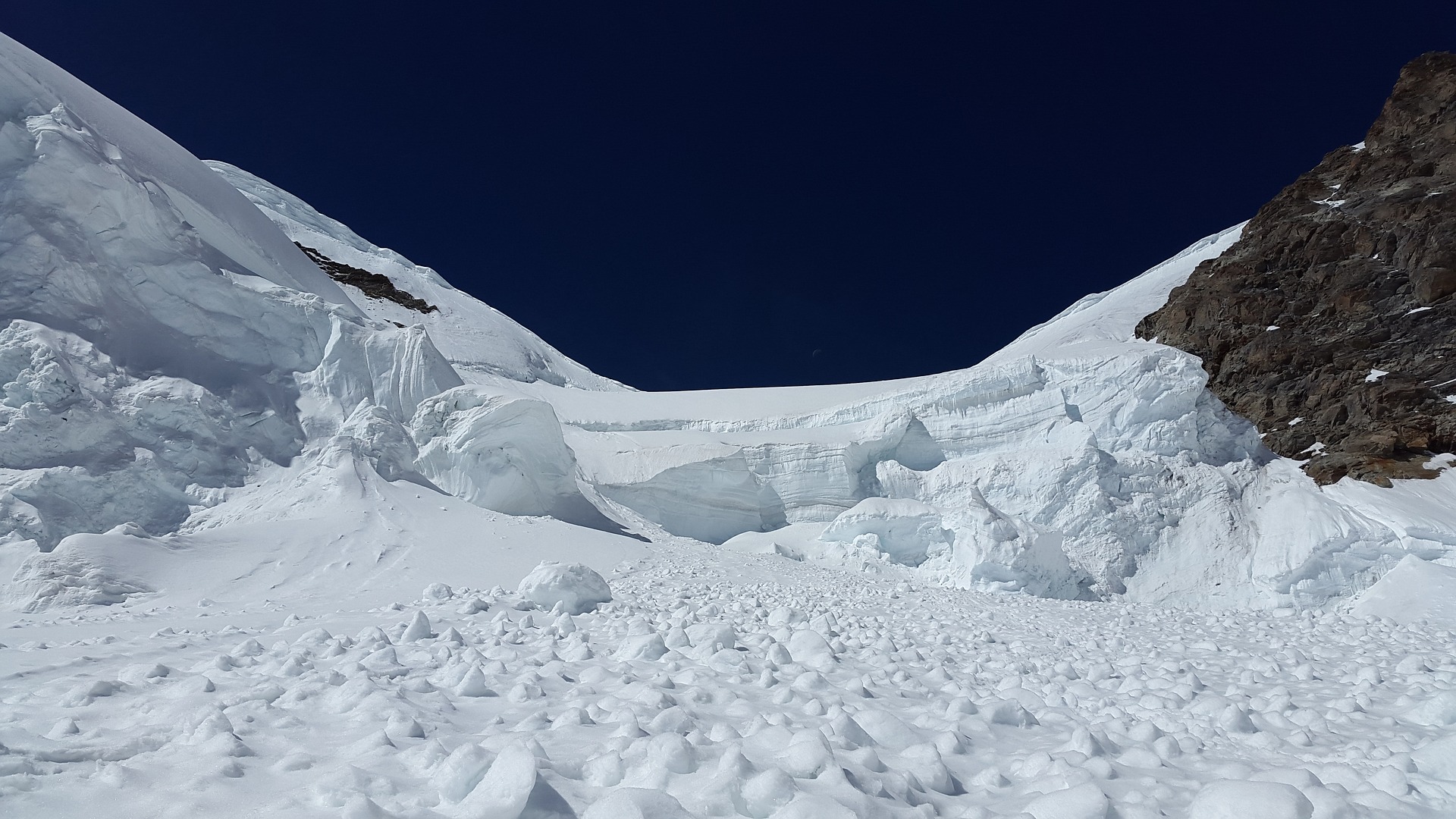Three points for an avalanche with a human in the middle

If you are planning a hike in the snow, you must remember there is always a possibility of avalanches occurring. Their power should never be underestimated. Avalanches commonly occur in mountainous or hilly areas, and there are many unfortunate incidents and even fatalities every year.
You need to be smart, and knowledge of the avalanche triangle is vital in making intelligent decisions when you are faced with danger. There are three points of an avalanche triangle, and these are the geography of the area, the weather, and the snowpack. Other factors also contribute, however, these are the three principal elements involved in risk assessment.

The terrain you are in is the first consideration in assessing your risk. By far the majority of avalanches occur on slopes with angles of thirty to fifty-five degrees. An overhanging snow feature is called a cornice: this could break off and cause an avalanche on a slope situated below. Convex shaped slopes are a factor as is the leeward side of a slope which is more dangerous than the windward side, particularly after some heavy snowfall.
Snow pillows and dips close to rocks and trees can also trigger an avalanche. It is always best to travel along a ridge rather than to walk in a valley or a gully that will naturally be the gravitational focus of a mass of snow and debris.
There are other hazards such as sudden changes in the aspect of the slope. If there are trees, rocks, and cliffs in the path of the flow, a person swept up in it could be seriously injured by these. If you have planned a path that crosses terrain known to pose these dangers, consider these issues carefully. Changing plans could save your life.
Weather is a prime factor affecting the likelihood of an avalanche. High snowfall or strong winds can increase the chances as can a slope exposed to the sun as warming and melting can trigger a slide. The wind picks up snow on the wind-facing side of a hill and drops it on the leeward side, so these slopes are generally less stable and become susceptible to sudden slides.

As snow falls, it settles in layers. As this snow accumulates and settles it becomes compressed and bonds. Factors that affect the snowpack are the density of the snow, the temperature and the depth of the snow and, of course, the wind. The variability in the density of the layers of snow can be a key cause of avalanches. Snow that has layers which are weaker than others cause instability. Irregular melting patterns and granular snow that does not bond well with other snow can be a factor.
These structural weaknesses of snow, when combined with other factors, can trigger avalanches. So terrain, snowpack, and prevailing weather conditions are the three key elements that combine to trigger these catastrophes.
If you are visiting the great outdoors, you will need to be clued up with all the latest information you can gather about the dangers of being in a specific location. If the danger is great, it may be wise to turn back to return another day when conditions are more favorable. Good luck!
If you have any comments then please drop us a message on our Outdoor Revival Facebook page
If you have a good story to tell or blog let us know about it on our FB page, we’re also happy for article or review submissions, we’d love to hear from you.
We live in a beautiful world, get out there and enjoy it. Outdoor Revival – Reconnecting us all with the Outdoors.
